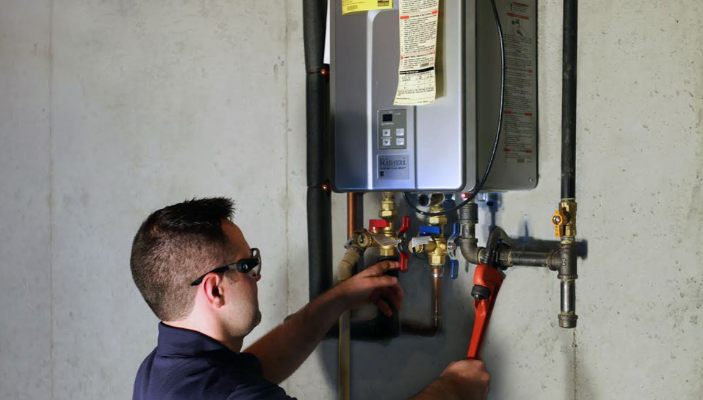Simple Ways to Maintain Your Home's Hot Water System ProperlySimple Ways to Maintain Your Home's Hot Water System Properly
Simple Ways to Maintain Your Home's Hot Water System ProperlySimple Ways to Maintain Your Home's Hot Water System Properly
Blog Article
How do you feel with regards to What Kind of Maintenance Do Water Heaters Need??

Warm water is important for everyday convenience, whether it's for a rejuvenating shower or washing recipes. To ensure your warm water system runs efficiently and lasts longer, routine upkeep is vital. This post supplies useful ideas and understandings on exactly how to maintain your home's hot water system to stay clear of disturbances and pricey repair services.
Introduction
Keeping your home's warm water system could appear overwhelming, yet with a couple of simple actions, you can guarantee it runs smoothly for years to come. This overview covers every little thing from recognizing your warm water system to DIY maintenance pointers and recognizing when to employ expert help.
Importance of Keeping Your Hot Water System
Normal upkeep not only extends the life-span of your hot water system yet likewise ensures it runs effectively. Overlooking maintenance can cause reduced efficiency, greater energy costs, and even early failing of the system.
Indicators Your Hot Water System Needs Maintenance
Recognizing when your hot water system needs focus can avoid significant issues. Watch out for indicators such as irregular water temperature, weird sounds from the heater, or rusty water.
Understanding Your Warm Water System
Before diving right into maintenance jobs, it's valuable to understand the standard elements of your warm water system. Normally, this consists of the water heater itself, pipelines, anode rods, and temperature level controls.
Regular Monthly Upkeep Tasks
Regular month-to-month checks can help catch small concerns before they rise.
Flushing the Hot Water Heater
Flushing your hot water heater gets rid of sediment accumulation, improving effectiveness and lengthening its life.
Checking and Changing Anode Rods
Anode poles avoid deterioration inside the tank. Checking and changing them when worn out is important.
Evaluating and Changing Temperature Level Settings
Changing the temperature level settings guarantees ideal efficiency and safety and security.
Do It Yourself Tips for Maintenance
You can perform several upkeep tasks yourself to maintain your warm water system in top condition.
Looking for Leaks
On a regular basis evaluate pipes and connections for leakages, as these can lead to water damage and greater costs.
Testing Stress Alleviation Valves
Testing the pressure safety valve guarantees it operates correctly and prevents extreme stress build-up.
Protecting Pipelines
Shielding hot water pipes decreases warm loss and can conserve power.
When to Call a Professional
While DIY upkeep is advantageous, some problems need expert expertise.
Facility Concerns Requiring Professional Aid
Examples include major leaks, electrical problems, or if your water heater is constantly underperforming.
Regular Professional Maintenance Advantages
Expert maintenance can include extensive evaluations, tune-ups, and guaranteeing compliance with security requirements.
Final thought
Routine maintenance of your home's hot water system is important for effectiveness, durability, and price financial savings. By adhering to these suggestions and knowing when to seek professional help, you can guarantee a reliable supply of warm water without unforeseen disturbances.
How to Maintain an Instant Hot Water Heater
Before tinkering with your hot water heater, make sure that it’s not powered on. You also have to turn off the main circuit breaker and shut off the main gas line to prevent accidents. Also turn off the water valves connected to your unit to prevent water from flowing into and out of the appliance. 2. When you’re done, you have to detach the purge valves’ caps. These look like the letter “T” and are situated on either side of the water valves. Doing so will release any pressure that has accumulated inside the valves while at the same time avoid hot water from shooting out and burning your skin. 3. When the purge valves’ caps are removed, you have to connect your hosing lines to the valves. Your unit should have come with three hoses but if it didn’t, you can purchase these things from any hardware or home repair shops. You can also get them from retail stores that sell water heating systems. Read the user’s manual and follow it to complete this task properly. When the hosing lines are connected, open the purge port’s valves. 4. You should never use harsh chemical cleaners or solutions when cleaning your unit. Make use of white vinegar instead. It should be undiluted and you’ll probably use about 2 gallons. 5. Now flush your water heater. This task should probably take about 40 minutes. We can’t give you specific directions for this because the procedure is carried out depending on the type, model and brand of your heater. With that being said, refer to the user’s manual. 6. When you’re done draining the unit, you have to turn off the purge port valves again. Remove the hosing lines that you earlier installed on each of the water valves. Put the valve caps (purge port) back in their respective places and be very careful so as not to damage the rubber discs that are found inside these caps. 7. Now that everything’s back in place, check your user’s manual again to find out how to reactivate your water heating system. 8. Once it is working, turn one of your hot water faucets on just to let air pass through the heater’s water supply pipes. Leave the tap on until water flows smoothly out of it. https://www.orrplumbing.com/blog/2014/september/how-to-maintain-an-instant-hot-water-heater/

As a person who reads on How to Maintain Your Water Heater & Prolong its Life, I assumed sharing that post was beneficial. For those who liked our blog post if you please do not forget to pass it around. Many thanks for being here. Come back soon.
Click For More Info Report this page